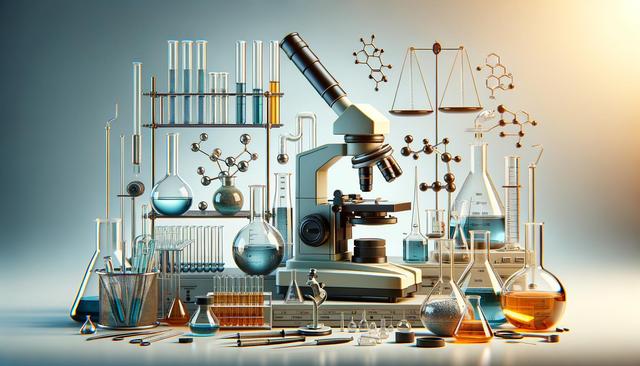
Essential Analytical Lab Equipment: What to Buy and How Much It Costs
Understanding the Basics: Core Instruments for Analytical Labs
Setting up an analytical laboratory requires a clear understanding of the fundamental equipment needed to ensure precision and efficiency. Whether your lab focuses on environmental testing, pharmaceuticals, food safety, or chemical analysis, certain instruments are considered essential. These include balances, pH meters, spectrophotometers, centrifuges, and chromatography systems. Each of these tools plays a vital role in the collection, measurement, and interpretation of data.
For example, analytical balances are critical for measuring substances with high precision, often to the nearest 0.1 mg. Prices for high-quality balances generally range from $500 to $3,000, depending on capacity and sensitivity. pH meters, crucial for testing acidity or alkalinity, can cost between $100 and $1,000. Spectrophotometers, used for measuring light absorbance in liquid samples, typically range from $1,500 to $10,000 depending on the wavelength range and features.
These tools form the foundation of any analytical lab. Investing in reliable models from reputable suppliers helps ensure long-term performance and minimizes downtime due to calibration or repair issues.
Chromatography Systems: A Major Investment with High Return
Chromatography equipment is indispensable for labs involved in separating and analyzing complex mixtures. The two main types—gas chromatography (GC) and high-performance liquid chromatography (HPLC)—are widely used in pharmaceutical testing, environmental analysis, and quality control processes. These systems are among the more substantial investments in a lab setup.
A basic HPLC system starts at around $10,000 and can go upwards of $50,000 or more for advanced configurations with autosamplers and detectors. GC systems often start in a similar range, with mass spectrometry detectors (GC-MS) pushing the cost beyond $100,000 in some cases. While expensive, these instruments offer unmatched sensitivity and specificity.
When budgeting for a chromatography system, also consider ongoing costs such as columns, solvents, calibration standards, and maintenance services. Partnering with a supplier that offers comprehensive after-sales support can help manage long-term operational costs and ensure consistent performance.
Support Tools: Enhancing Workflow and Accuracy
Beyond primary analytical instruments, a set of support tools is necessary to maintain sample integrity and streamline workflows. These include centrifuges, incubators, water purification systems, and sample preparation stations. Although often overlooked, these tools are critical for ensuring reliable data output.
For instance, laboratory centrifuges used for separating components in liquid samples range from $800 to $5,000. Water purification systems, essential in producing reagent-grade water, can start at $1,000 and exceed $10,000 for high-capacity units. Incubators used in microbiological analysis range from $1,200 to $6,000, depending on size and features.
Key support tools include:
- Vortex mixers and shakers
- Refrigerators and freezers for sample storage
- Fume hoods and biosafety cabinets
- Glassware washers and drying ovens
These items collectively improve lab safety, ensure compliance with quality standards, and enable smoother day-to-day operations.
Choosing the Right Supplier: What to Look For
Finding a reliable supplier is just as important as selecting the right equipment. Reputable distributors offer not only quality instruments but also warranty services, technical support, and training options. It’s generally advisable to choose suppliers that specialize in scientific equipment and have a strong track record of serving labs in your industry.
When evaluating suppliers, consider the following:
- Availability of installation and calibration services
- Access to spare parts and consumables
- Customer support responsiveness
- Flexible purchasing options, including leasing
- Compliance with industry certifications and standards
While price is an important factor, long-term reliability and service quality can provide better value over time. Some suppliers also offer refurbished equipment, which can be a cost-effective option for startups or labs with limited budgets.
Budgeting and Planning: Estimating Total Costs
Developing a budget for analytical lab equipment requires more than just tallying up initial purchase costs. Maintenance, calibration, consumables, and potential expansions must also be accounted for. Creating a comprehensive budget ensures that your lab remains functional and compliant without unexpected financial strain.
To give a rough estimate, a small to mid-sized analytical lab setup typically requires an initial investment ranging from $50,000 to $200,000. This range covers essential instruments, support tools, installation, and basic infrastructure such as lab furniture and safety equipment. Ongoing annual costs for consumables, maintenance, and quality assurance can add another 10-20% to the yearly operating budget.
Proper planning can be supported by:
- Creating an itemized list of equipment and accessories
- Consulting with lab designers or consultants
- Seeking quotes from multiple suppliers for comparison
- Planning for scalability and future technology upgrades
A well-thought-out investment strategy helps labs achieve operational efficiency from the outset and adapt to future analytical demands.
Conclusion: Building a Strong Foundation for Reliable Analysis
Equipping your analytical laboratory with the right tools is a foundational step toward achieving accurate results and maintaining operational efficiency. From core instruments like balances and pH meters to advanced systems such as chromatography setups, each piece of equipment plays a role in your lab’s success. Factoring in costs, supplier reliability, and long-term support ensures your investment yields consistent value. Careful planning and informed purchasing decisions will help your lab meet quality standards, accommodate growing workloads, and adapt to emerging analytical needs.


